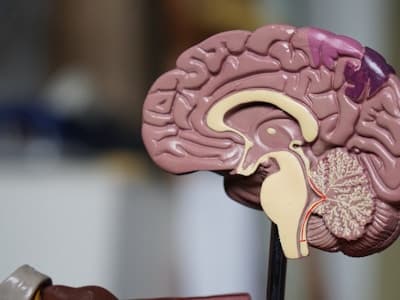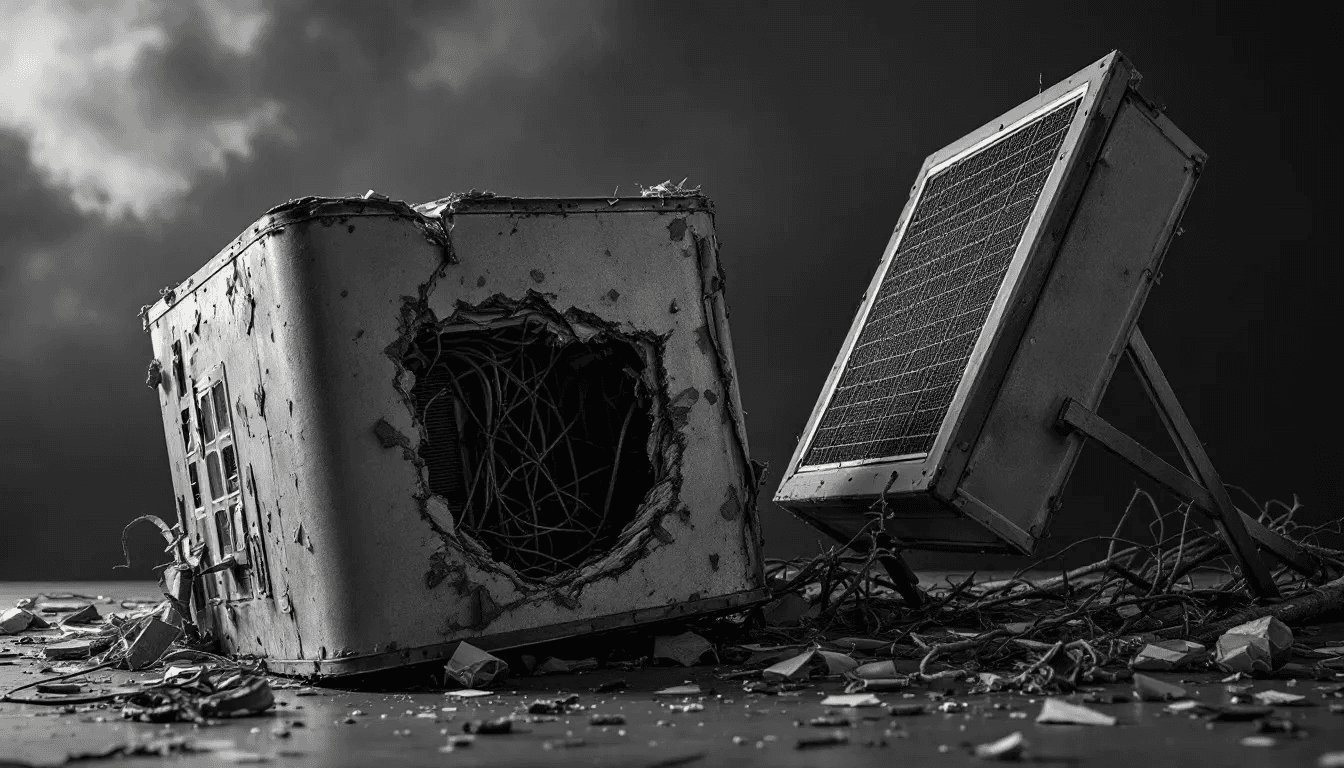Severe weather can cause significant damage to HVAC systems, compromising indoor air quality and comfort. Understanding how to identify storm damage and implement effective repairs is crucial for restoring safe, healthy indoor environments after weather events.
Common Types of Storm Damage to HVAC Systems

Storm damage assessment and repair work in progress
Flood Damage
Water Intrusion Effects:
- Electrical components damaged by water exposure
- Insulation saturation reducing efficiency and promoting mold
- Ductwork contamination with floodwater and debris
- Control systems malfunction due to moisture
Wind Damage
Structural Impact:
- Outdoor unit displacement or complete removal
- Ductwork disconnection from building structure
- Roof damage affecting system penetrations
- Debris impact causing physical component damage
Electrical Surge Damage
Power-Related Issues:
- Control board failure from lightning strikes
- Motor burnout due to power fluctuations
- Sensor malfunction affecting system operation
- Thermostat damage disrupting temperature control
Hail Damage
Physical Component Damage:
- Condenser coil fin damage reducing efficiency
- Fan blade deformation affecting airflow
- Housing dents compromising structural integrity
- Protective covering damage exposing internal components
Immediate Post-Storm Assessment
Safety First
Initial Precautions:
- Turn off electrical power to all HVAC equipment
- Avoid contact with wet electrical components
- Check for gas leaks if system uses natural gas
- Ensure structural safety before system inspection
Visual Inspection Checklist
Outdoor Unit Assessment:
- Physical displacement or tilting
- Visible damage to housing or components
- Debris accumulation around or in the unit
- Refrigerant line damage or disconnection
Indoor System Inspection:
- Water intrusion signs in mechanical rooms
- Ductwork displacement or disconnection
- Insulation damage or saturation
- Control panel moisture or damage
Documentation for Insurance
Essential Records:
- Photograph all damage before any cleanup
- Document water levels if flooding occurred
- Record serial numbers of damaged equipment
- Note operational status before the storm
Professional Assessment Requirements
When to Call Professionals
Critical Situations:
- Electrical components exposed to water
- Gas line damage or suspected leaks
- Structural damage affecting system mounting
- Refrigerant leaks indicated by hissing sounds or ice
Qualified Technician Evaluation
Professional Inspection:
- Electrical safety testing of all components
- Refrigerant system integrity assessment
- Airflow measurement and ductwork evaluation
- Indoor air quality testing for contamination
Damage Assessment Report
Comprehensive Documentation:
- Component-by-component condition evaluation
- Repair versus replacement recommendations
- Cost estimates for restoration work
- Timeline projections for completion
Common Repair Procedures
Electrical System Restoration
Component Replacement:
- Control boards damaged by water or surge
- Motors with water damage or electrical failure
- Wiring compromised by moisture or physical damage
- Safety switches affected by environmental exposure
Mechanical Component Repair
Physical Damage Correction:
- Condenser coil straightening or replacement
- Fan blade balancing or replacement
- Housing repair or replacement for structural integrity
- Mounting restoration to ensure proper operation
Ductwork Restoration
Air Distribution System:
- Reconnection of displaced ductwork sections
- Sealing of joints opened by structural movement
- Insulation replacement when damaged or contaminated
- Cleaning to remove debris and contaminants
Refrigerant System Service
Cooling System Restoration:
- Leak detection and repair of damaged lines
- System evacuation to remove moisture
- Refrigerant recharge to proper operating levels
- Performance testing to verify correct operation
Indoor Air Quality Considerations
Contamination Assessment
Potential Issues:
- Mold growth from moisture intrusion
- Bacterial contamination from floodwater
- Chemical pollutants from storm debris
- Particulate matter from system damage
Air Quality Testing
Professional Evaluation:
- Mold spore sampling to detect contamination
- Bacterial culture testing for health risks
- Chemical analysis for toxic exposures
- Particulate measurement for respiratory concerns
Remediation Requirements
Cleanup Procedures:
- Ductwork sanitization to eliminate contaminants
- Component disinfection before system restart
- Filter replacement with high-efficiency units
- Air purification during initial operation
Prevention and Protection Strategies
Pre-Storm Preparation
Protective Measures:
- Secure outdoor units with proper anchoring
- Cover exposed components when possible
- Clear drainage around equipment areas
- Document system condition for insurance purposes
Flood Protection
Water Damage Prevention:
- Elevate equipment above expected flood levels
- Install flood barriers around critical components
- Waterproof electrical connections where possible
- Create drainage pathways away from equipment
Surge Protection
Electrical Safety:
- Install surge protectors on all HVAC equipment
- Use dedicated circuits for major components
- Ground all equipment properly
- Disconnect power during severe weather warnings
Insurance and Financial Considerations
Coverage Evaluation
Policy Review:
- Storm damage coverage specifics
- Flood insurance requirements and limitations
- Replacement cost versus actual cash value
- Business interruption coverage for commercial properties
Claims Process
Documentation Requirements:
- Professional assessments of damage extent
- Repair estimates from qualified contractors
- Proof of maintenance showing proper system care
- Operational records before storm damage
Cost Management
Financial Planning:
- Emergency repair versus permanent solutions
- Energy efficiency improvements during restoration
- Preventive measures to reduce future damage
- Financing options for major replacements
Restoration Timeline
Emergency Phase (0-48 Hours)
Immediate Actions:
- Safety assessment and hazard mitigation
- Water removal and moisture control
- Professional evaluation of damage extent
- Temporary climate control if needed
Assessment Phase (2-7 Days)
Detailed Evaluation:
- Component testing for functionality
- Indoor air quality assessment
- Repair planning and cost estimation
- Insurance coordination and approval
Repair Phase (1-4 Weeks)
Restoration Work:
- Component replacement as needed
- System cleaning and sanitization
- Performance testing and adjustment
- Final inspection and certification
Follow-Up Phase (Ongoing)
Long-Term Monitoring:
- Performance tracking for efficiency
- Indoor air quality verification
- Preventive maintenance scheduling
- System optimization for future protection
Technology Solutions
Advanced Monitoring
Smart System Integration:
- Remote monitoring for early problem detection
- Moisture sensors for flood warning
- Performance tracking for efficiency maintenance
- Automated alerts for system malfunctions
Improved Materials
Damage-Resistant Components:
- Corrosion-resistant materials for coastal areas
- Waterproof electrical components
- Impact-resistant housing materials
- Quick-disconnect systems for emergency removal
Professional Services
Emergency Response
24/7 Availability:
- Immediate assessment after storm events
- Emergency repairs for critical failures
- Temporary solutions while planning permanent fixes
- Coordination with insurance adjusters
Restoration Expertise
Specialized Services:
- Water damage remediation experience
- Indoor air quality testing and improvement
- Energy efficiency optimization during repairs
- Code compliance ensuring safety standards
Quality Assurance
Testing and Verification
Performance Confirmation:
- Airflow measurement ensuring proper distribution
- Temperature control verification throughout building
- Energy efficiency testing for optimal operation
- Indoor air quality confirmation of safe environment
Warranty Protection
Long-Term Assurance:
- Component warranties on replacement parts
- Labor guarantees on installation work
- Performance warranties for efficiency standards
- Maintenance agreements for ongoing protection
Conclusion
Storm damage to HVAC systems requires immediate attention and professional expertise to restore safe, comfortable indoor environments. From initial safety assessment through final system optimization, each step in the restoration process is critical for long-term performance and indoor air quality.
Understanding the types of damage that storms can cause, implementing proper assessment procedures, and working with qualified professionals ensures effective restoration that protects both property and occupant health.
Investment in storm-resistant equipment, proper maintenance, and emergency preparedness can significantly reduce damage and restoration costs. When damage does occur, prompt professional response and thorough restoration work provide the foundation for continued system reliability and indoor air quality protection.
Don't wait for the next storm to threaten your HVAC system. Implement protective measures now and establish relationships with qualified professionals who can respond quickly when weather emergencies occur.
Protect your HVAC system from storm damage with professional assessment and restoration services. Contact Air Allergen & Mold Testing for comprehensive indoor air quality evaluation after weather events.
